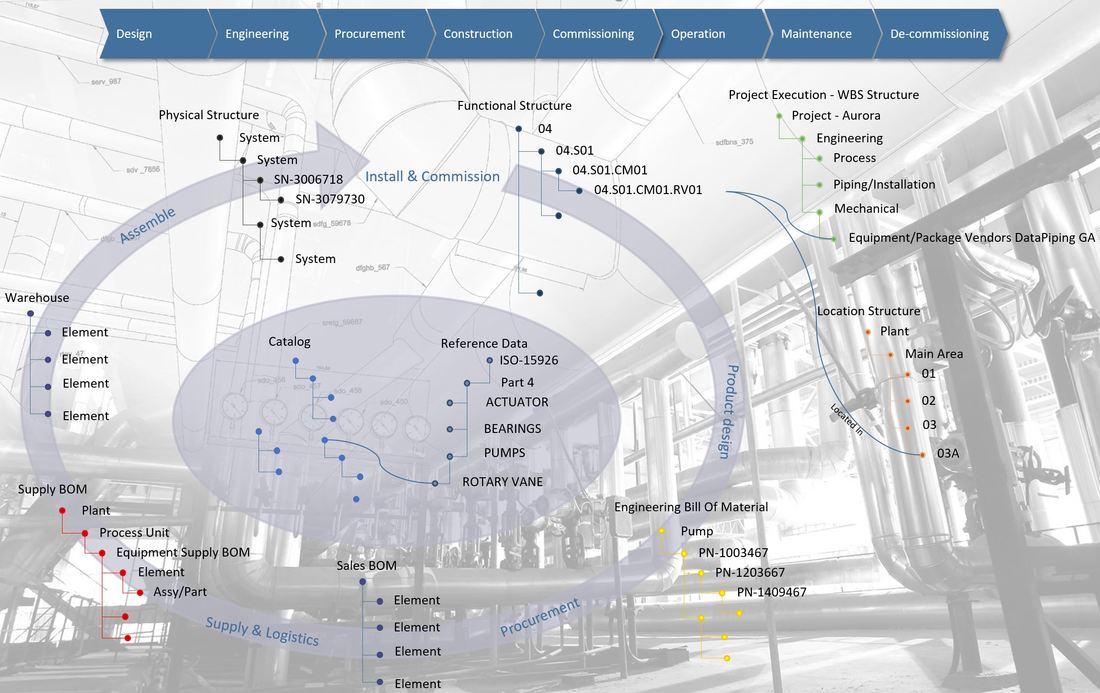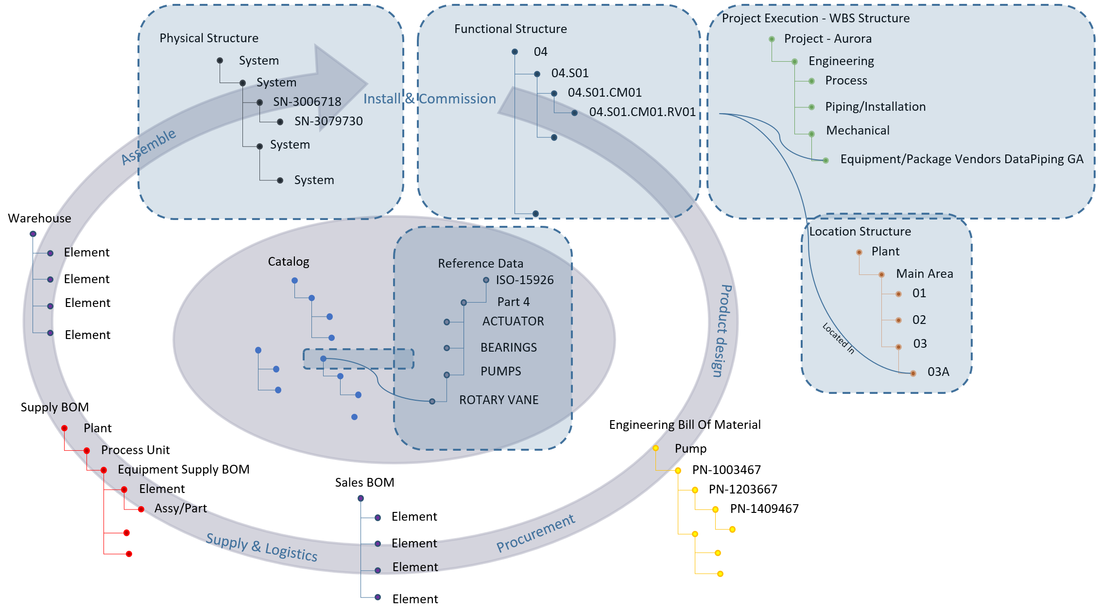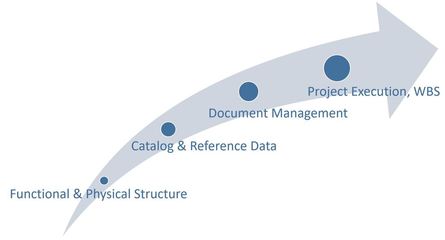This as a first in a series of articles where I share some experiences with you from different product companies, EPC’s and operators.
The articles will cover the motivation for doing as they did, and where their main focus was put in order to achieve their goals.
There is a span in the different experiences of almost 20 years… I would like you to reflect a bit on that and keep in mind some of the buzzwords of today. Especially digital twin, IOT and Big Data analytics.
In this series I will use my information structure map, or the “circle of life” as a client jokingly called it, to explain where the different companies put their focus in terms of information management strategy and why.
An overview explaining the different structures can be found in the article:
Plant Information Management - Information Structures, and further details regarding each information structure are discussed in:
Plant Engineering meets Product Engineering in capital projects
Handover to logistics and supply chain in capital projects
Plant Information Management - Installation and Commissioning
Plant Information Management – Operations and Maintenance
The articles will cover the motivation for doing as they did, and where their main focus was put in order to achieve their goals.
There is a span in the different experiences of almost 20 years… I would like you to reflect a bit on that and keep in mind some of the buzzwords of today. Especially digital twin, IOT and Big Data analytics.
In this series I will use my information structure map, or the “circle of life” as a client jokingly called it, to explain where the different companies put their focus in terms of information management strategy and why.
An overview explaining the different structures can be found in the article:
Plant Information Management - Information Structures, and further details regarding each information structure are discussed in:
Plant Engineering meets Product Engineering in capital projects
Handover to logistics and supply chain in capital projects
Plant Information Management - Installation and Commissioning
Plant Information Management – Operations and Maintenance
Operator 1’s first objectives was to shorten the project execution time from design through installation and commissioning by letting the projects information model be gradually built up through all project phases and by all stakeholders in one common platform.
By doing it this way there would be no handover of documentation but rather a handover of access and responsibility of data. A large focus was put on standardizing information exchange between both stakeholders in the capital projects and between computer systems. The entry point to all information was a 3D representation of the data structures!
Makes you think of digital twin……. However this initiative was before anybody had heard of it...The 3D representation was NOT a design model, but rather a three-dimensional representation of the asset linked to all the information structures creating different dimensions or information layers if you will.
So it had to be quite small assets this operator was dealing with you might think?
Actually no, one of the assets managed was about a million tags. Concepts from the gaming industry like Level Of Detail and back-face culling were used to achieve the level of performance needed from the 3D side.
So why this enormous effort by an operator to streamline just the initial stages of an assets lifecycle?
I mean the operators real benefit comes from operating the asset in order to produce whatever it needs to produce, right?
Because it was seen as a prerequisite to capitalize on plant information in training, simulation, operations, maintenance and decommissioning. Two words summarizes the motivation: Maximum up-time. How to achieve it: operational run-time data from sensors linked and compared with accurate and parametric as-designed, as-built and as-maintained data.
By doing it this way there would be no handover of documentation but rather a handover of access and responsibility of data. A large focus was put on standardizing information exchange between both stakeholders in the capital projects and between computer systems. The entry point to all information was a 3D representation of the data structures!
Makes you think of digital twin……. However this initiative was before anybody had heard of it...The 3D representation was NOT a design model, but rather a three-dimensional representation of the asset linked to all the information structures creating different dimensions or information layers if you will.
So it had to be quite small assets this operator was dealing with you might think?
Actually no, one of the assets managed was about a million tags. Concepts from the gaming industry like Level Of Detail and back-face culling were used to achieve the level of performance needed from the 3D side.
So why this enormous effort by an operator to streamline just the initial stages of an assets lifecycle?
I mean the operators real benefit comes from operating the asset in order to produce whatever it needs to produce, right?
Because it was seen as a prerequisite to capitalize on plant information in training, simulation, operations, maintenance and decommissioning. Two words summarizes the motivation: Maximum up-time. How to achieve it: operational run-time data from sensors linked and compared with accurate and parametric as-designed, as-built and as-maintained data.
Figure 2. shows what information structures the operator put most emphasis on. Quite naturally the Functional structure (tag structure and design requirements), and corresponding physically installed asset information was highly important, and this is what they started with (see figure 3). Reference Data to be able to compare and consolidate data from the different structures was next in line together with an extensive parts (article) catalog of what could be supplied by whom in different regions of the world.
There was an understanding that a highly document-oriented industry could not shift completely to structured data and information structures overnight for everything, so document management was also included as what was regarded as an intermediate step. The last type of structure they focused on was project execution structures (Work Breakdown Structures). This was not because it was regarded as less important, actually it was regarded as highly important since it introduced the time dimension with traceability and control of who should do what, or did what when. The reasoning behind it was that since work breakdown structures tied into absolutely everything, they wanted to test and roll out the “base model” of data structures in the three-dimensional world (the 3D database) before introducing the fourth dimension.
Bjorn Fidjeland
The header image used in this post is by Jacek Jędrzejowski and purchased at dreamstime.com
Bjorn Fidjeland
The header image used in this post is by Jacek Jędrzejowski and purchased at dreamstime.com





 RSS Feed
RSS Feed
